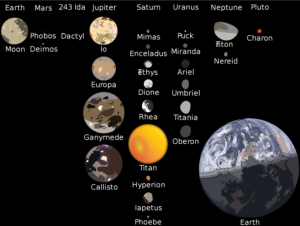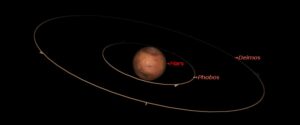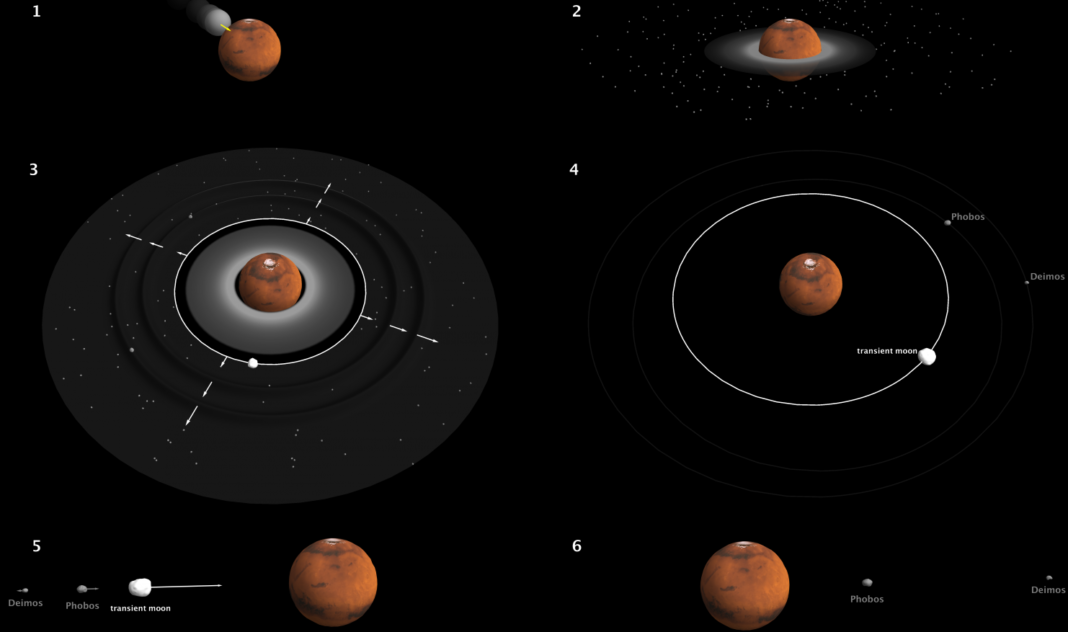How Many Moons Does Mars Have: Exploring the Red Planet’s Natural Satellites
Introduction
Mars, often referred to as the “Red Planet,” has fascinated scientists and space enthusiasts for centuries. Its similarities to Earth in terms of size, axial tilt, and presence of ice at the polar caps have made it a prime target for exploration. One intriguing aspect of Mars is its moons. In this article, we will delve into the question, “How many moons does Mars have?” and unravel the mysteries surrounding these natural satellites.
How Many Moons Does Mars Have?

Mars has two moons: Phobos and Deimos. These small celestial bodies, also known as satellites, orbit around the Red Planet. Phobos, the larger of the two, measures approximately 22 kilometers in diameter, while Deimos has a diameter of around 12 kilometers. Both moons were named after the sons of Ares, the Greek god of war, who is analogous to Mars in Roman mythology.
Characteristics of Phobos and Deimos

Phobos: The Larger Moon
Phobos, the closer moon to Mars, has several distinguishing features. Its surface is covered in regolith, a layer of loose, fragmented material resembling dust and rocks. Phobos has a heavily cratered surface, with Stickney crater being the largest and most prominent. This crater is so massive, measuring approximately 9 kilometers in diameter, that it covers a significant portion of Phobos’ surface.
Here are some key characteristics of Phobos:
- Diameter: Approximately 22 kilometers
- Orbital Radius: Approximately 9,378 kilometers
- Orbit Period: Approximately 7 hours and 39 minutes
- Surface Features: Craters, grooves, and ridges
- Origin: Believed to be a captured asteroid
Deimos: The Smaller Moon
Deimos, the further moon from Mars, is less explored compared to its counterpart. Its surface is also covered in regolith, but it is relatively smoother compared to Phobos. Deimos has a lower density than Phobos, suggesting a higher proportion of water ice beneath its surface. It lacks prominent craters and has a generally smoother appearance.
Here are some key characteristics of Deimos:
- Diameter: Approximately 12 kilometers
- Orbital Radius: Approximately 23,458 kilometers
- Orbit Period: Approximately 30 hours and 18 minutes
- Surface Features: Smoother appearance with fewer prominent craters
- Origin: Believed to be a captured asteroid
Origins of Phobos and Deimos

The origin of Mars’ moons remains a subject of debate among scientists. One prevailing theory suggests that Phobos and Deimos were once asteroids that were captured by Mars’ gravitational pull.
Another hypothesis suggests that these small moons could be remnants of a larger moon that shattered due to tidal forces caused by Mars’ gravity. This theory is supported by the fact that both Phobos and Deimos have irregular shapes and surface features indicative of their fractured origins.
Deimos – The Smaller Martian Moon
In contrast to Phobos, Deimos is smaller and orbits Mars at a greater distance. Its smooth surface and unusual orbital characteristics have fueled scientific curiosity. We’ll delve into the latest research and theories surrounding Deimos’ formation, discussing its potential origins and shedding light on why this small moon continues to captivate astronomers and space enthusiasts alike.
Significance of Studying Martian Moons
The study of Phobos and Deimos is crucial for understanding the history and evolution of Mars. By analyzing their compositions and surface features, scientists can gain insights into the Red Planet’s geological processes, such as impacts and volcanic activity. Additionally, studying Mars’ moons can provide valuable information about the formation and evolution of other moons and small celestial bodies within our solar system.
How Many Moons Does Mars Really Have?
The question remains: How many moons does Mars have? While Phobos and Deimos are the only confirmed natural satellites, the possibility of additional, smaller moons or captured asteroids exists. We’ll explore the ongoing research and observations that aim to answer this question definitively, providing a glimpse into the dynamic nature of our solar system.
Implications and Significance
Understanding Mars’ moons goes beyond satisfying our curiosity. These celestial bodies play a crucial role in the broader context of planetary science and exploration. From potential resources for future Mars missions to clues about the planet’s early history, Phobos and Deimos hold key information that could shape our understanding of the Red Planet and its place in the cosmos.
Future Missions and Exploration
As technology advances, so does our ability to explore and study celestial bodies. We’ll discuss upcoming missions and initiatives focused on Mars and its moons, including plans to send spacecraft to study Phobos and Deimos up close. These missions hold the promise of unlocking even more secrets about these Martian moons, paving the way for future human exploration and potential colonization.
Conclusion
In conclusion, Mars has two moons, Phobos and Deimos, which orbit around the Red Planet. These small celestial bodies possess unique characteristics and origins that continue to intrigue scientists. By studying Mars’ moons, we can deepen our understanding of Mars itself and gain valuable knowledge about the formation and evolution of celestial objects in our solar system.
So, next time you gaze up at the night sky and admire the beauty of Mars, remember that it is not alone in its journey through space. The enigmatic moons of Phobos and Deimos accompany the Red Planet silently sharing its secrets and inspiring generations of explorers to unravel the mysteries of the universe.



This page is phenomenal. The splendid substance exhibits the essayist’s commitment. I’m overwhelmed and expect more such unfathomable posts.
Thank you so much for your kind words! We’re thrilled to hear that you found our content phenomenal and that it resonated with you. Your encouragement means a lot to us, and we’re committed to bringing you more incredible posts in the future. Stay tuned for more engaging content!